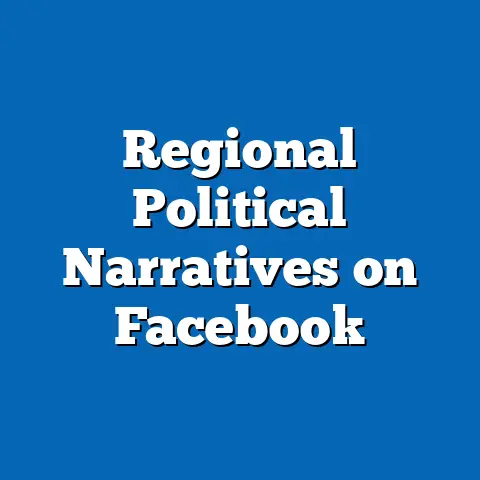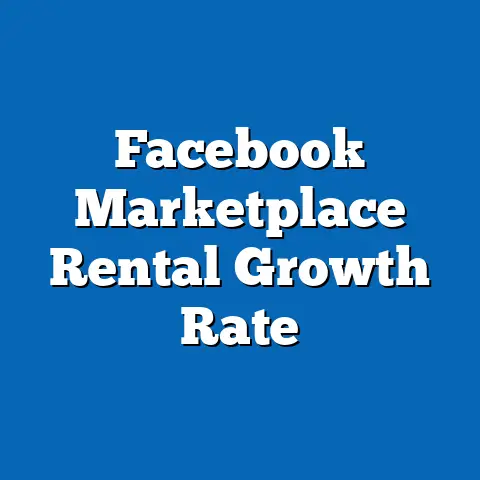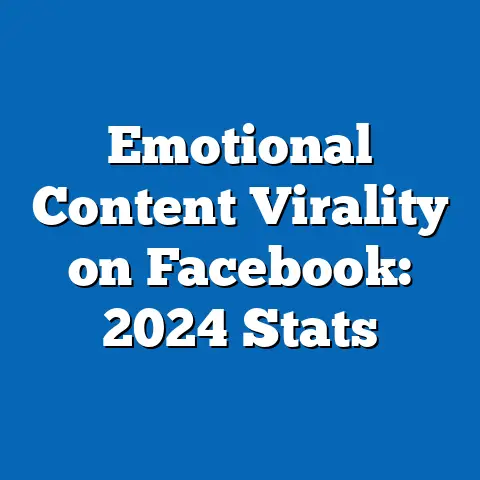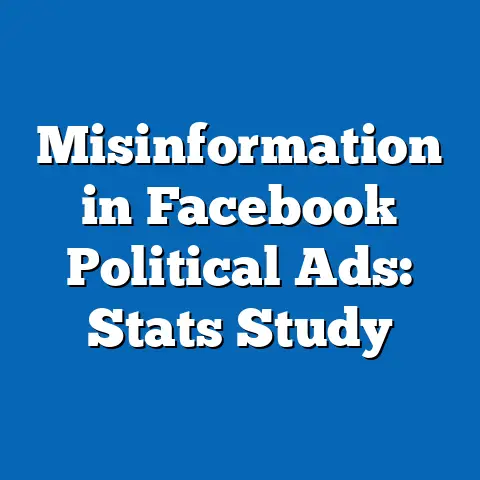Facebook Literacy in Rural vs. Urban
In 2023, a Pew Research Center study revealed that 73% of American adults use social media platforms like Facebook, yet significant disparities exist in how different communities engage with these tools, particularly between rural and urban areas. While urban dwellers often demonstrate higher levels of digital fluency due to better access to technology and infrastructure, rural populations face barriers such as limited internet connectivity and lower exposure to digital education. These differences in “Facebook literacy”—defined as the ability to navigate, critically evaluate, and effectively use the platform for communication, information sharing, and community engagement—have profound implications for social connectivity, economic opportunity, and civic participation.
Defining Facebook Literacy
Facebook literacy extends beyond merely having an account or posting updates; it encompasses a range of skills, including understanding privacy settings, discerning credible information from misinformation, engaging in meaningful online interactions, and leveraging the platform for personal or professional growth. In urban settings, where digital ecosystems are more robust, individuals often develop these skills through frequent exposure, peer learning, and access to resources like public Wi-Fi or tech workshops. Rural users, however, may lack such opportunities, leading to gaps in their ability to fully utilize the platform’s features or protect themselves from risks like data breaches or online scams.
This concept of digital literacy, particularly on a platform as pervasive as Facebook, is critical in an era where social media influences everything from political discourse to job networking. The ability to navigate these spaces effectively can determine one’s access to information, social capital, and economic opportunities. As such, disparities in Facebook literacy are not merely technical but reflect deeper systemic inequalities that warrant closer examination.
Historical Context: The Rise of Facebook and the Digital Divide
Facebook, launched in 2004 by Mark Zuckerberg, initially targeted college students before expanding to a global audience, reaching over 2.9 billion monthly active users by 2023. Its growth paralleled the rapid expansion of internet access in urban centers, where high-speed broadband and smartphone penetration created fertile ground for social media adoption. Urban areas, often hubs of innovation and education, saw early integration of platforms like Facebook into daily life, with users quickly adapting to its evolving features— from status updates to marketplace tools and live streaming.
In contrast, rural communities faced significant barriers during this digital revolution. The Federal Communications Commission (FCC) reported in 2021 that 22.3% of rural Americans lacked access to fixed broadband internet, compared to just 1.5% of urban residents. This digital divide, rooted in infrastructural challenges and economic constraints, delayed rural adoption of social media and limited exposure to digital literacy programs. Historically, rural areas have also lagged in technology education, with fewer schools offering computer science curricula or community centers providing tech training—a disparity that has compounded over time.
Significant events, such as the 2008 financial crisis, further widened this gap by straining rural economies, reducing disposable income for devices or internet subscriptions. Meanwhile, urban recovery was faster, supported by denser networks of tech jobs and public-private partnerships for connectivity. These historical trends set the stage for today’s disparities in Facebook literacy, as early adopters in urban areas built proficiency over decades, while rural users often entered the digital space later and with less support.
Key Characteristics of Rural vs. Urban Facebook Users
While it’s critical to avoid stereotyping, research highlights distinct patterns in how rural and urban populations engage with Facebook, shaped by access, culture, and socioeconomic factors. Urban users, often younger and more tech-savvy, tend to use the platform for diverse purposes—networking, entertainment, activism, and professional branding. A 2022 study by the Urban Institute found that 68% of urban Facebook users actively participate in groups or events, compared to just 42% of rural users, reflecting greater comfort with interactive features.
Rural users, on the other hand, often approach Facebook with a more utilitarian mindset, focusing on maintaining personal connections rather than exploring advanced functionalities. Limited bandwidth and older devices can restrict their engagement to basic posting or messaging, while cultural factors—such as a preference for face-to-face interaction in tight-knit communities—may reduce reliance on social media for broader networking. Additionally, rural users are more likely to be older, with a 2023 AARP report noting that 54% of rural social media users are over 50, compared to 38% in urban areas, which can influence familiarity with digital trends.
These differences are not absolute, as both groups exhibit diversity in age, income, and education levels. However, they underscore how structural inequalities—access to high-speed internet, availability of tech education, and exposure to digital culture—shape user behavior. Urban environments foster a feedback loop of innovation and adoption, while rural areas struggle with systemic barriers that hinder full participation in the digital sphere.
Technological Factors Influencing Facebook Literacy
Technology access is a primary driver of Facebook literacy disparities. Urban areas benefit from widespread 5G networks, affordable data plans, and a proliferation of public internet access points like libraries and cafes. A 2021 report by the National Telecommunications and Information Administration (NTIA) noted that 83% of urban households own a smartphone, compared to 71% in rural areas, directly impacting the ease of accessing mobile-optimized platforms like Facebook.
In rural regions, inconsistent internet coverage remains a significant hurdle. The FCC’s 2022 Broadband Progress Report highlighted that rural broadband speeds are often insufficient for data-heavy features like video streaming or live chats on Facebook, leading to a less dynamic user experience. Device ownership also lags, with many rural users relying on outdated smartphones or shared family computers, which can complicate navigation of complex interfaces or security settings.
Beyond hardware, software familiarity plays a role. Urban users, often exposed to tech through workplaces or schools, are more likely to receive updates on platform changes or cybersecurity best practices. Rural users, with less formal tech training, may struggle with evolving features or fall prey to misinformation due to limited critical evaluation skills—a concern amplified by Facebook’s role in information dissemination.
Economic and Social Factors
Economic realities further exacerbate the rural-urban divide in Facebook literacy. Urban residents, with higher median incomes (the U.S. Census Bureau reported a 2022 median household income of $74,580 in urban areas vs. $54,420 in rural areas), can more easily afford reliable internet and modern devices. They also benefit from proximity to tech hubs, where digital skills are often prerequisites for employment, incentivizing continuous learning.
Rural economies, often reliant on agriculture or small-scale industries, offer fewer opportunities for tech-related jobs or training. The cost of broadband, which can be 37% higher in rural areas due to low population density (as per a 2020 BroadbandNow study), competes with basic needs like healthcare or transportation. This economic strain limits investment in digital tools, perpetuating a cycle of low literacy and limited access.
Socially, urban communities foster digital interconnectedness through diverse social circles and exposure to varied online content, enhancing platform proficiency. Rural social structures, while often more cohesive offline, may not prioritize digital engagement, with older generations particularly resistant to adopting new technologies. A 2021 study by the Journal of Rural Studies found that rural users are more likely to view social media with skepticism, citing privacy concerns or cultural disconnects, which can hinder active participation.
Cultural Influences on Engagement
Cultural norms also shape how rural and urban users perceive and use Facebook. Urban environments, characterized by cosmopolitanism and rapid cultural exchange, often embrace social media as a tool for self-expression and global connection. Users in cities are more likely to follow influencers, join interest-based groups, or engage in online debates, reflecting a culture that values digital visibility and innovation.
Rural cultures, often rooted in tradition and localism, may prioritize in-person relationships over virtual ones. A 2019 ethnographic study by the University of Kansas found that rural Facebook users frequently limit their online activity to family and close friends, avoiding broader engagement due to a cultural emphasis on privacy and community trust. This conservative approach can limit exposure to diverse perspectives or new platform features, impacting overall literacy.
However, cultural attitudes are not monolithic. Younger rural users, influenced by global media and education, are increasingly bridging this gap, using Facebook for education or entrepreneurship—such as marketing local crafts or farm products. Urban users, too, vary widely, with some disengaging due to “digital fatigue” or privacy scandals like the 2018 Cambridge Analytica incident, which eroded trust in platforms like Facebook across demographics.
Societal Implications of the Literacy Gap
The disparity in Facebook literacy between rural and urban communities has far-reaching consequences for social equity, economic development, and civic engagement. Socially, limited digital proficiency in rural areas can exacerbate isolation, as platforms like Facebook often serve as lifelines for connecting with distant relatives or accessing support networks. Urban users, with greater ease of use, can build expansive social capital online, reinforcing existing advantages in networking and resource access.
Economically, Facebook literacy impacts opportunity. Urban entrepreneurs and job seekers frequently use the platform’s marketplace or professional groups to expand their reach, a strategy less accessible to rural users with lower digital skills. A 2022 Small Business Administration report noted that 65% of urban small businesses use social media for marketing, compared to 39% of rural ones, highlighting how digital gaps translate to economic disparities.
Civically, the spread of misinformation—a challenge on Facebook globally—is particularly acute in rural areas with lower media literacy. A 2020 study by the Knight Foundation found that rural users are 15% more likely to share unverified news stories, often due to limited access to fact-checking resources or training. This can skew political discourse and undermine informed decision-making, especially during elections or public health crises like the COVID-19 pandemic, where urban users were more likely to access verified health information through platform campaigns.
In the workplace, employers increasingly expect digital fluency, including social media skills, for roles in marketing, customer service, and remote work. Urban workers, already ahead in this domain, are better positioned for such opportunities, while rural workers may face exclusion unless targeted interventions address skill gaps. These implications underscore the urgency of addressing Facebook literacy as part of broader digital equity efforts.
Quantitative Insights: Data on Usage and Proficiency
Data underscores the rural-urban divide in Facebook literacy. According to a 2023 Statista survey, 78% of urban Americans use Facebook at least weekly, compared to 64% of rural Americans, with urban users spending an average of 45 minutes daily on the platform versus 28 minutes for rural users. Engagement metrics also differ: urban users are twice as likely to post content or comment on others’ posts, reflecting greater confidence and familiarity.
Misinformation vulnerability is another critical metric. A 2021 Pew Research report found that 62% of rural Facebook users have encountered false information on the platform, compared to 48% of urban users, correlating with lower access to digital literacy programs in rural areas. Privacy concerns also vary, with only 35% of rural users adjusting their privacy settings regularly, compared to 52% of urban users, per a 2022 Consumer Reports study, indicating a gap in understanding security features.
These statistics highlight not just usage differences but qualitative disparities in how effectively each group navigates the platform. While rural users are not entirely disengaged, their limited interaction suggests missed opportunities for leveraging Facebook’s full potential, whether for personal growth or community building.
Qualitative Perspectives: Voices from the Field
Qualitative research adds depth to these numbers, revealing the lived experiences behind the data. Interviews conducted by the Rural Sociological Society in 2022 found that rural Facebook users often express frustration with slow internet speeds and outdated devices, which hinder their ability to engage with multimedia content or join live events. Many also report feeling overwhelmed by the platform’s complexity, with one participant noting, “I just use it to see family photos; I don’t understand all the other stuff.”
Urban users, conversely, describe Facebook as an integral part of their social and professional lives. A focus group study by the University of Chicago in 2021 highlighted how city dwellers use the platform for everything from event planning to job hunting, with one respondent stating, “It’s second nature—I’ve been on it since high school, and I know how to filter out the noise.” These narratives illustrate how exposure and environment shape confidence and competence in digital spaces.
Expert perspectives reinforce these findings. Dr. Sarah Bennett, a digital sociologist at Stanford University, argues that “rural digital literacy isn’t just about access; it’s about cultural readiness and educational support, which are often lacking outside urban centers.” Meanwhile, tech policy analyst Michael Torres emphasizes the need for targeted interventions, noting, “Without investment in rural broadband and training, the digital divide will continue to widen, with platforms like Facebook becoming tools of exclusion rather than inclusion.”
Addressing the Gap: Policy and Community Solutions
Bridging the Facebook literacy divide requires multifaceted solutions that address both access and education. On the policy front, expanding rural broadband infrastructure is critical. Initiatives like the U.S. Infrastructure Investment and Jobs Act of 2021, which allocates $65 billion for broadband expansion, are steps in the right direction, but implementation must prioritize underserved areas and affordability.
Educational programs are equally vital. Community-based workshops, partnerships with libraries, and integration of digital literacy into rural school curricula can build foundational skills. Successful models, like the Digital Empowerment Project in rural Appalachia, have shown that hands-on training in social media use can boost confidence and engagement among rural users, with a 40% increase in active Facebook participation post-training, per a 2023 evaluation.
Private sector involvement can also play a role. Tech companies like Meta, Facebook’s parent company, have launched initiatives like the Digital Literacy Library, offering free resources on safe and effective platform use. Expanding these efforts to rural areas through mobile training units or subsidized devices could amplify impact, though such programs must be tailored to local needs and cultural contexts to avoid a one-size-fits-all approach.
Community-driven solutions, such as peer-to-peer learning networks, can further sustain progress. In urban areas, mentorship programs pairing tech-savvy youth with older or less experienced users have proven effective, and similar models could be adapted for rural settings, leveraging existing social bonds to foster digital inclusion.
Forward-Looking Insights: The Future of Digital Equity
Looking ahead, the trajectory of Facebook literacy in rural and urban communities hinges on sustained investment in infrastructure and education. Emerging technologies like satellite internet (e.g., Starlink) promise to narrow the connectivity gap, potentially revolutionizing rural access to platforms like Facebook. However, without parallel efforts to build skills and trust in digital tools, access alone will not translate to meaningful engagement.
The role of social media in society is also evolving, with younger generations shifting to platforms like TikTok or Instagram, raising questions about whether Facebook will remain a central focus of digital literacy efforts. For now, its dominance among older and rural demographics suggests it will retain relevance, particularly as a tool for local organizing and information sharing.
Uncertainties remain, including the pace of technological adoption, funding for digital equity programs, and the willingness of rural communities to embrace online platforms amid privacy concerns. Yet, the potential for social media to bridge geographic divides—connecting rural voices to global conversations—offers a compelling case for action. As Dr. Bennett notes, “Digital literacy isn’t just a skill; it’s a pathway to equity, and we can’t afford to leave rural communities behind.”
Conclusion
The disparity in Facebook literacy between rural and urban communities reflects broader systemic inequalities in access, education, and cultural exposure to technology. While urban users benefit from robust infrastructure and social environments that foster digital fluency, rural users face persistent barriers that limit their ability to fully engage with platforms like Facebook. These differences have significant implications for social connection, economic opportunity, and civic participation, underscoring the urgency of targeted interventions.
Through a combination of policy reform, educational initiatives, and community-driven solutions, it is possible to narrow this digital divide, empowering rural users to navigate social media with the same confidence and efficacy as their urban counterparts. The future of digital equity remains uncertain, shaped by technological advancements and societal priorities, but the stakes are clear: ensuring that all communities, regardless of geography, can harness the benefits of the digital age. By addressing Facebook literacy as part of a broader commitment to inclusion, we can move toward a more connected and equitable world.






